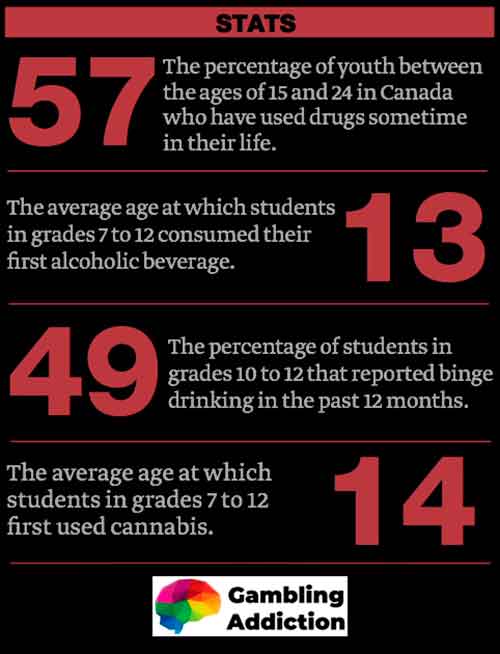The consumption of alcoholic beverages for pleasure is widespread and well established in Canadian culture, and many people consume them in moderation. Those who frequently drink too much alcohol take risks. Health problems, damage, or accidents are possible, and dependence can also develop gradually.
Innovative, personalized consultation for treatment of alcoholism and drug addiction.
Something went wrong. Please try again later.
It is recommended that healthy adult men drink no more than two standard glasses of alcoholic beverages per day and healthy adult women no more than once per day. A standard drink is equivalent to 3l of beer, 1l of wine, or 4cl of schnapps. Days without alcohol consumption are recommended as they can counteract the development of a habit.

What are the effects and side effects of alcohol consumption?
The effects are numerous and vary according to the level of alcohol in the blood. Physical and psychological conditions such as fatigue, illness, stress, or emotions can reinforce the effect of alcohol. Alcohol reaches its highest level in the blood between 30 and 60 minutes after being consumed. The body eliminates an average of 0.1‰ to 0.15‰ per hour. There is no other way to eliminate alcohol from the bloodstream faster.
Drinking alcoholic beverages can stimulate, relax, and disinhibit. Drinking alcohol can also cause loss of concentration and visual difficulties, as well as impaired judgment. The propensity to take risks or use violence is higher under the influence of alcohol than when sober. High levels of alcohol can lead to loss of consciousness, loss of reflexes, amnesia, and shallow breathing, and decreased body temperature, symptoms of paralysis, coma, involuntary urination, respiratory arrest, and death. The risk of accidents increases greatly with the overestimation of one’s abilities and decreased reaction capacity.
The interaction between alcohol and different illegal substances can reinforce the effects of the different substances. Alcohol consumption can also increase, decrease or modify the effects of several medications. It is therefore very important to read package inserts that provide information on this subject.
Does alcohol affect women and men differently? Do gender and age affect the effects of alcohol?
Women’s bodies contain more fat and less liquid than men’s: with the same amount of alcohol, a woman’s blood- alcohol level is higher than a man’s of the same weight. In addition, women eliminate alcohol more slowly than men.
The consequences of drinking are more serious for children and teenagers than for adults because of their lower weight and because their brains have not yet finished developing. In addition, their bodies are less able to eliminate alcohol because of their immature livers. Even a small amount of alcohol can cause respiratory depression and death in small children.
Older people also have a lower capacity to eliminate alcohol because their bodies contain less fluid. Thus, with the same amount of alcoholic beverage consumed, they will have a higher blood alcohol level than younger people. Older adults’ problems with alcohol use often go unnoticed. Additional complications can arise with certain age-related conditions such as diabetes or dementia.
Consequences of long-term alcohol use – Alcohol abuse and dependence
A distinction is generally made between low-risk drinking, alcohol abuse, and alcohol dependence (alcoholism). Low-risk drinking is when a person consumes alcohol moderately and in a way that is appropriate for his or her situation. Daily consumption of an average of two standard glasses of an alcoholic beverage (corresponding to about two beers, 2 dl of wine, or 8 cl of brandy) for women or three glasses of an alcoholic beverage for men, increases the health risks considerably. For alcohol abuse, a distinction is made between chronic risk drinking (daily consumption of 2 glasses of alcohol for women and 3 glasses for men), occasional drunkenness, episodic abuse (from 5 glasses per occasion for women and 6 for men), and alcohol consumption inappropriate to the situation involving risks (e.g. at work, in the street, during pregnancy, when taking medication, etc.)
The transition from abuse to addiction to alcohol occurs imperceptibly. Alcohol addiction, more commonly known as “alcoholism”, which can be both psychological and physical, is a disease that is diagnosed using internationally defined criteria. In the case of alcohol dependence, withdrawal symptoms can occur when alcohol consumption is no longer taking place. Mild withdrawal includes tremors, sleep disturbances, anxiety, rapid heartbeat, or increased blood pressure. In severe withdrawal, in addition, disorientation, hallucinations, convulsions, or delirium tremens may occur.
Possible consequences of regular heavy drinking are damage to all organs (especially the liver and digestive system), disorders of the nervous system, and memory-related functions. In addition, some forms of cancer, high blood pressure, and sexual dysfunction can result from chronic alcohol consumption. It can also cause social and financial problems for those affected and their families.
Effects of alcohol consumption on the unborn child
It is recommended not to drink alcohol during pregnancy because it can cross the placenta and cause neurological complications and birth defects. The more alcohol consumed, the greater the likelihood of damage to the fetus. This damage can take the form of low birth weight, slowed growth, malformation of internal organs, or delayed mental development. Children may have neurodevelopmental, behavioral, learning or growth retardation problems. Because alcohol can seep into every cell, all organs can be affected.


